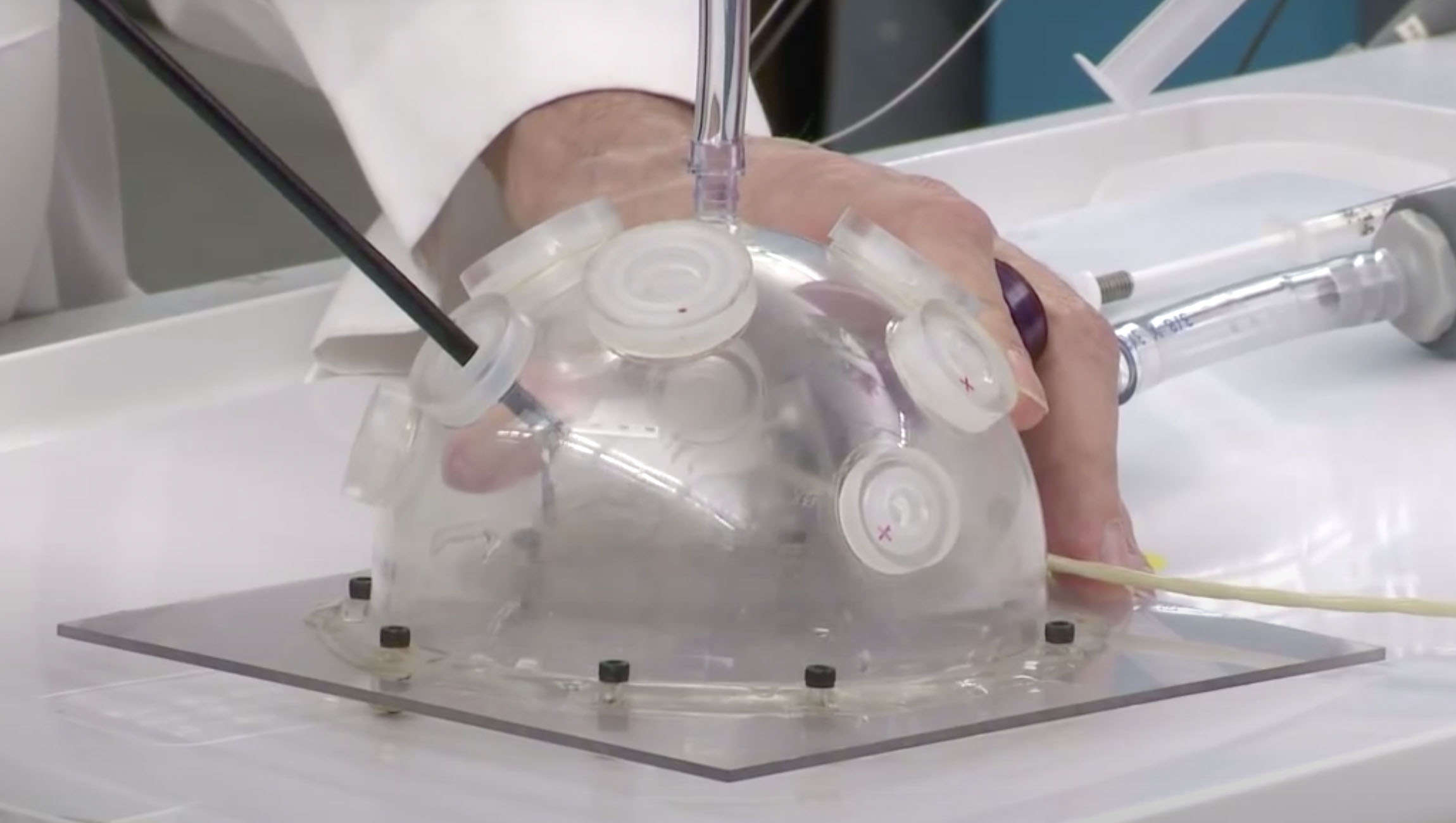Create a free profile to get unlimited access to exclusive videos, sweepstakes, and more!
Here's how we’ll do surgery in space, because as scary it sounds, we’re going to need it

There were way too many conveniences that the crew of the starship Enterprise took for granted — like the sickbay and artificial gravity.
Because we don’t live in the Star Trek universe, doctors will not just be able to perform surgery in space as they do on Earth and then stick the patient in a stasis chamber while they recover. It’s not even Alien, in which the crew gets to stay unconscious in cryo-chambers until touching down. The unfortunate reality of humans boldly going where they have never gone before is that medical emergencies don’t discriminate between what planet you’re on and whether or not you might be floating in microgravity. Not to mention that space in itself is a health hazard.
If missions to Mars do happen, at least one surgical emergency is expected to happen every 2.4 years. Think about that.
Astronauts have already faced issues that could have been lethal if left untreated. At least in these situations, Earth was still right below, because our species hasn’t gone beyond the ISS since 1972. Blood behaves strangely in microgravity. Last year, a vascular study on eleven astronauts was ordered by NASA after the space agency suspected formation of blood clots. The blood clot discovered (the first one known to occur in space) was not the only abnormality. About half of the astronauts were found to be suffering from blood flow that had slowed dramatically or even gone backwards after 50 days on the space station. NASA did come up with a battery-powered heart pump, but it has limitations.
“Exposure to a weightless environment during spaceflight results in a chronic headward blood and tissue fluid shift compared with the upright posture on Earth, with unknown consequences to cerebral venous outflow,” said the doctors who conducted the study, which was published in JAMA Network Open.
Hydrostatic pressure (exerted by a fluid at equilibrium) caused by gravity is what keeps blood flowing inside the body the way it does on Earth. Minor fluid shifts happen on terra firma, but disruption of that causing bizarre changes in flow and a clot that put an astronaut’s life in danger is just more proof that our species was not meant to exist in space. Now imagine a surgeon having to operate without the advantage of gravity, and look up any video of what happens to water or other fluids that spill in microgravity. Drops that would have otherwise stayed in the bottle or splattered to the ground become suspended in midair. At least the blood clot was taken care of after the astronaut had returned to the home planet.
So far, only laparoscopic surgery has been experimented with in zero-G, and not even on a human. The subject was a pig. While pigs can be effective analogs for what happens to humans in many circumstances, they are still no substitute. The team of doctors who carried it out worried about floating blood and other fluids or debris obscuring their vision. What the experiment showed them was that they were at least able to see clearly because of the tendency of the bowel to stay in place because of a structure that keeps it attached to the abdominal wall. Blood and other fluids stuck to the abdominal wall because surface tension. Unfortunately, that same surface tension could make blood stick to surgical instruments.
This doesn’t mean an instant solution. The team felt that performing such a procedure sans gravity could cause psychological trauma to doctors. You also have to think about the aftermath. Even minimally invasive surgery can end up involving fluids outside the actual surgical procedure, such as drips of antibiotics or hydrating fluids. Post-surgical complications could also happen.
“There are advantages to performing a laparoscopic instead of an open surgical procedure in a weightless environment. These will become important as the laparoscopic support hardware is miniaturized from its present form, as laparoscopic technology becomes more advanced,” said the doctors, who published a study on their findings in National Library of Medicine.
What if open surgery is the only option? Intestines and other organs are prone to floating outside the body, along with drops of blood and other fluids. Magnetizing surgical tools offers one solution to this. Surgical bubbles (top image) are another. Operating inside a bubble, which stays on with an adhesive and features arm holes for doctors to work through. Another contraption being developed is a robot that is capable of multiple functions such as suction, irrigation, lighting, picking up instruments and cauterizing wounds in the bubble. Every conceivable advancement still can't prepare us for what might arise from the alteration of immune functions (being studied by NASA scientists, above) and DNA in microgravity.
With manned Artemis missions looming, we’re going to have to figure out a backup plan if something goes wrong. Some things from Star Trek are going to have to become a reality.



























